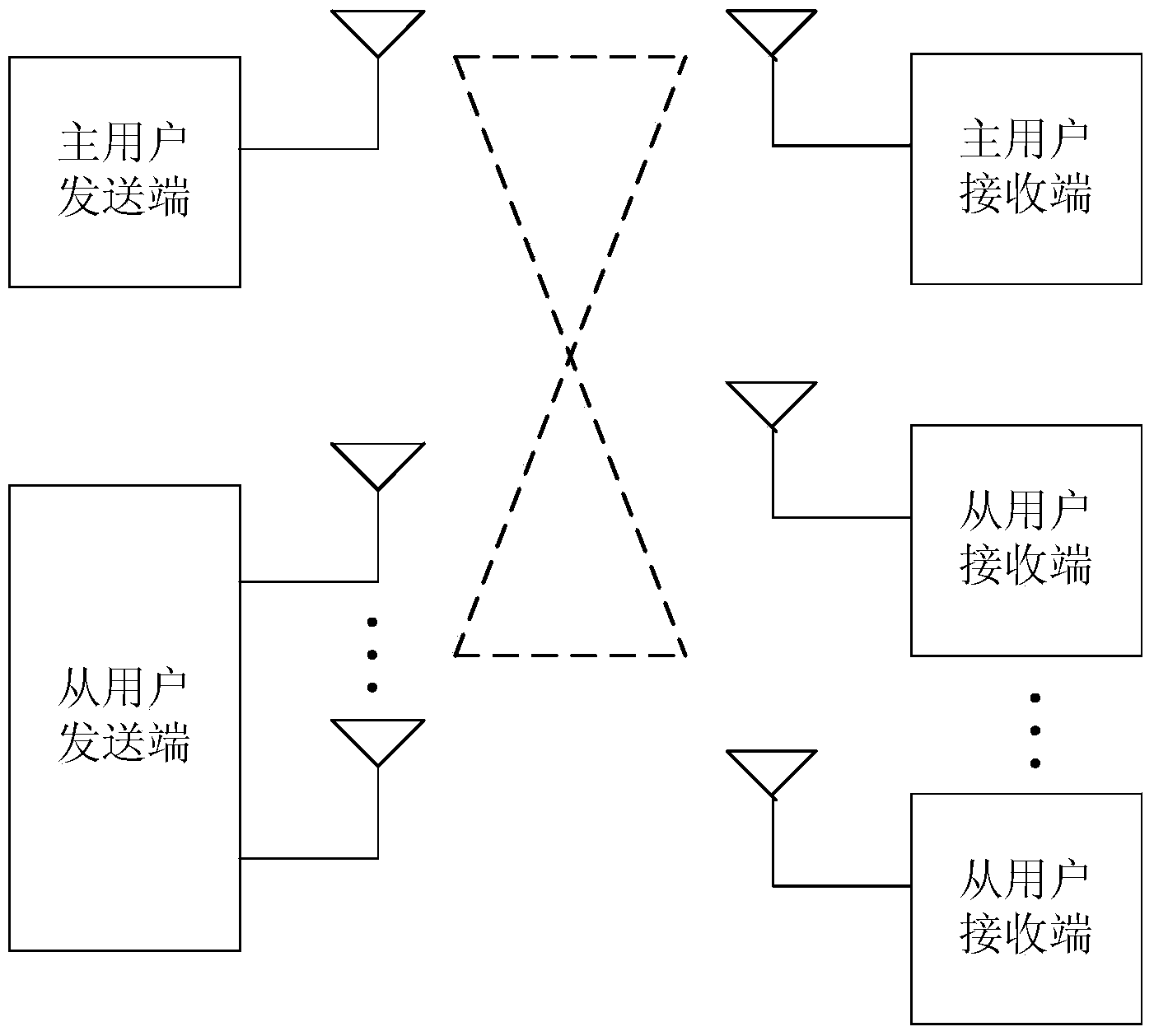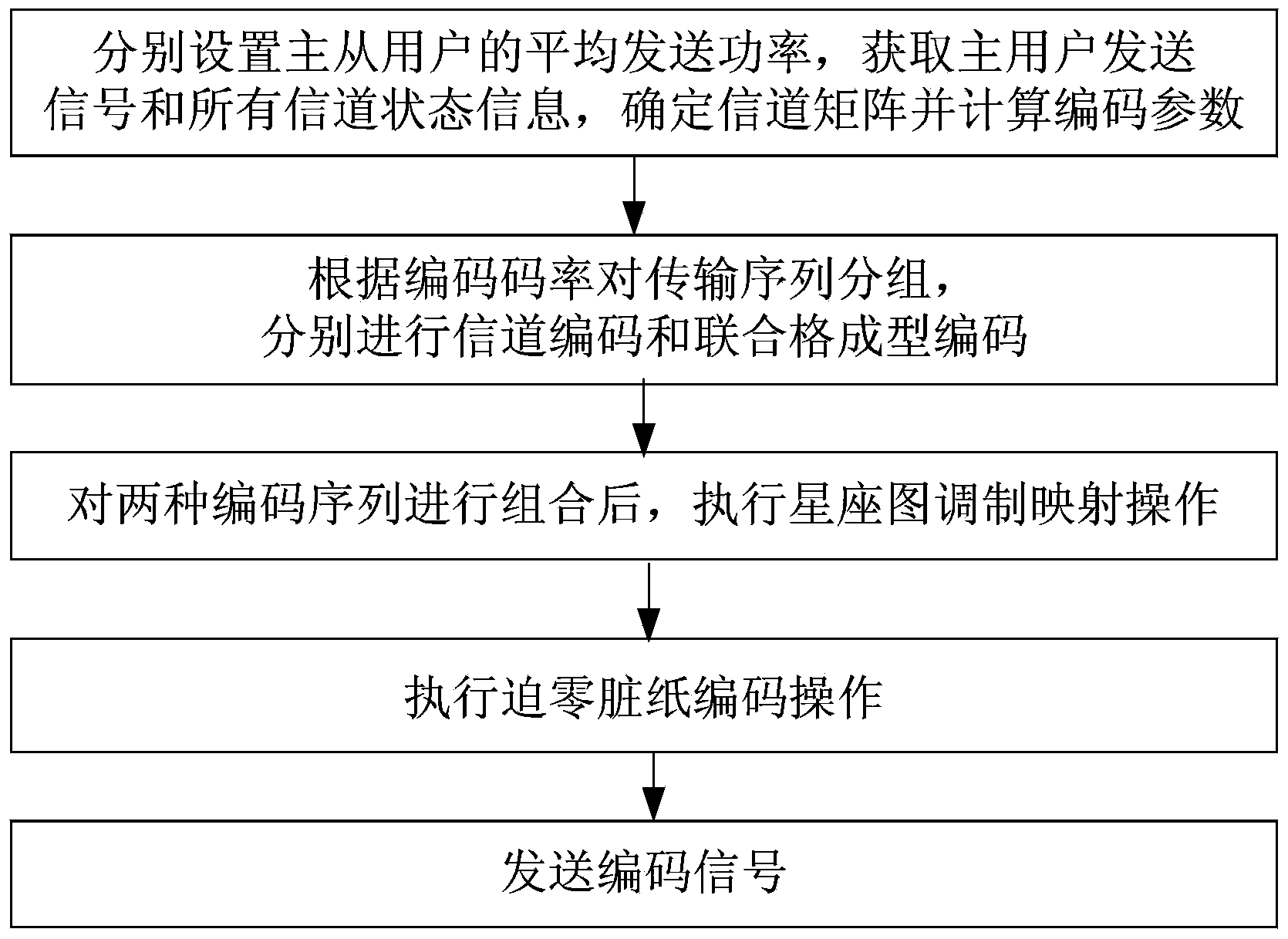Dirty paper coding and decoding method based on joint lattice forming technology in cognitive network
A dirty paper coding, cognitive wireless network technology, applied in digital transmission systems, electrical components, error prevention, etc., can solve the problem of not finding the encoding and decoding method, increasing the decoding complexity, etc., to achieve simple and easy operation steps, The effect of promoting the application prospect and reducing the receiving bit error rate is good
- Summary
- Abstract
- Description
- Claims
- Application Information
AI Technical Summary
Problems solved by technology
Method used
Image
Examples
example 1
[0050] Example 1: Two slave users use the same 4-state, code rate 3 / 4 convolutional code, namely k s = 3, n s =4, the generating matrix is G 1 = G 2 = 1 0 0 0 0 1 0 0 0 0 D 1 + D 2 , There are 2 uncoded bits in it.
example 2
[0051] Example 2: Two slave users use the same 8-state, code rate 3 / 4 convolutional code, namely k s = 3, n s =4, the generating matrix is G 1 = G 2 = 1 0 0 0 0 1 0 0 0 0 D 2 1 + D + D 3 , There are 2 uncoded bits in it. ...
example 3
[0052] Example 3: Two slave users use the same 8-state, code rate 3 / 4 convolutional code, namely k s = 3, n s =4, the generating matrix is G 1 = G 2 = 1 0 0 0 0 1 0 0 0 0 1 + D + D 3 1 + D 2 ...
PUM
 Login to View More
Login to View More Abstract
Description
Claims
Application Information
 Login to View More
Login to View More - R&D
- Intellectual Property
- Life Sciences
- Materials
- Tech Scout
- Unparalleled Data Quality
- Higher Quality Content
- 60% Fewer Hallucinations
Browse by: Latest US Patents, China's latest patents, Technical Efficacy Thesaurus, Application Domain, Technology Topic, Popular Technical Reports.
© 2025 PatSnap. All rights reserved.Legal|Privacy policy|Modern Slavery Act Transparency Statement|Sitemap|About US| Contact US: help@patsnap.com



